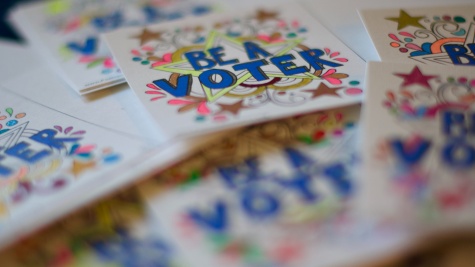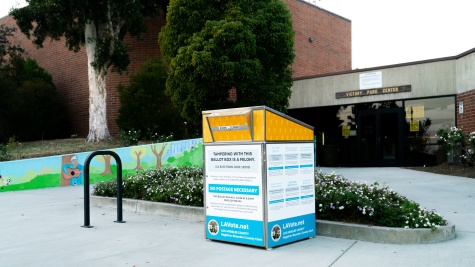Mail-in ballots and registrations in key states
Updates from our Elections Performance Center data tracking
As a flashing display in the MEDSL offices reminds us, there are now 39 days to the election.
We’ve begun sharing several plots a day highlighting the most recent election administration data from key states. Across our various social media platforms, as well as on the Elections Performance Central website, we’re now posting:
- Daily updates on the status of Pennsylvania’s mail-in ballots
- Daily updates on the status of Florida’s mail-in ballots
- Daily updates on the status of Wisconsin’s mail-in ballots
- Weekly updates on Michigan’s voter registration numbers
- Weekly updates on Pennsylvania’s voter registration numbers
- Weekly updates on North Carolina’s voter registration numbers
We’ve also shared updates on requests for mail-in ballots in North Carolina, and voter registration numbers in Arizona, Florida, Georgia, Montana, and Wisconsin. What have we learned?
The highlights
- Democrats request more mail-in ballots — but not everywhere
- In Pennsylvania, several times more Democrats than Republicans have requested a mail-in ballot
- In North Carolina, slightly more Democrats than Republicans have requested a mail-in ballot, but both lag behind requests by unaffiliated voters
- In Florida, barely more ballots have been sent to Republicans than Democrats one day into the domestic absentee voting period
- Republicans are gaining more registrations in some (but not all!) key states
- In Florida, Democrats have fallen dramatically behind Republicans in voter registrations since 2020
- In Arizona, a jump in the number of Republicans since 2020 stands against a dip in the number of Democrats
- In Pennsylvania, where there are more registered Democrats than Republicans, the weekly increase in the number of Republicans consistently outpaces the weekly increase in the number of Democrats, continuing the yearslong gradual narrowing in voter registrations there
- North Carolina is the big exception that we’ve studied so far: the number of newly registered Democrats overtook the number of newly registered Republicans the week that Kamala Harris became the presumptive Democratic nominee, and has remained larger every week since then
- A big caveat: in Florida, Arizona, and Pennsylvania we’ve studied net changes, but in North Carolina we’ve studied individual new registrations. It could be that new registrants are more often Democrats than Republicans in more than just North Carolina
- We’re now well into the phase of the election where UOCAVA ballots have been sent out and are even being returned to election officials in meaningful numbers, and we’re just on the cusp of the phase when domestic mail-in ballots in a number of key states are being sent to voters as well. (For more information, take a look at the UF Election Lab, which tracks early votes around the country.) Every state we’re keeping an eye on, including Michigan, Montana, and Georgia, are seeing steady increases week after week in their registered voter pools.
Key findings, state by state
Pennsylvania
In the latest mail-in ballot data from Pennsylvania, about 875,000 Democrats have requested a mail-in ballot, compared to about 370,000 Republicans. This doesn’t necessarily mean that Democrats have a big advantage, though — in the 2024 primary, our analyses showed that Pennsylvania Democrats were much more likely to vote by mail than Pennsylvania Republicans.
Perhaps a more interesting signal from Pennsylvania is the net change in voter registrations by party each week. Since mid-July, we’ve been downloading the state’s weekly reports, and simply checking the difference in the number of registered voters of each party from one week to the next. You can see the latest numbers here. Every week, without exception, the number of Republicans in Pennsylvania increases more than the number of Democrats. However, there are two major points to keep in mind. First, there are more Democrats than Republicans in Pennsylvania, so while the number of Republicans is growing faster than the number of Democrats, Democrats still have an advantage in the number of registered voters. Second, as many others have noted, this is part of a long-term trend going back about 5 presidential election cycles, so it isn’t necessarily a product of this election’s events or dynamics.
Florida
On September 26, Florida sent out its domestic absentee ballots, after more than a week of sending out UOCAVA ballots to overseas voters. Our latest daily update on Florida’s mail ballot statuses is here. The partisan dynamics of vote by mail in Florida are unlike any other key state: while Republicans nationwide are less inclined to vote by mail, Florida Republicans are, if anything, more likely to vote by mail than Florida Democrats. The initial data from the first day of the mail-in ballot period suggest that the 2024 general election will be no exception, with Republicans slightly leading Democrats in the number of mail ballots sent out in that state. An important caveat, though: we shouldn’t read too much into these trends until a few days have passed, since it may be affected by quirks of election administration and data reporting, such as the order in which counties report their data. Indeed, right before domestic absentee ballots were sent out, Democrats had gained a slight edge in the number of ballots delivered to UOCAVA voters.
Even more striking are Florida’s voter registration statistics. We compared the number of registered Floridians of each party in each month of 2024 and the corresponding month in 2020, and found a dramatic decrease in the number of Democrats alongside a sizeable increase in Republicans. This is a well-known fact, and arguably a continuation of a trend that precedes 2020.
Wisconsin
Wisconsin’s data do not support comparisons by party, but suggest two key takeaways at this stage. Only about a third as many mail-in ballots have been requested in Wisconsin compared to this point in the pandemic election of 2020, but already tens of thousands of mail-in ballots have been returned in that crucial presidential swing state. On voter registrations, while the state entered 2024 with over 100,000 more registered voters than it had in the beginning of 2020, the 2024 registration totals in September 2024 are much closer to the number of registered voters back in September 2020, which suggests (though it doesn’t necessarily mean) that the pace of new registrations in 2020 may have been higher than in 2024.
Michigan
The state is consistently seeing a net increase of about 5,000 to 10,000 registered voters every week.
North Carolina
Every week since the beginning of July, we have downloaded the North Carolina voter file and calculated the number of people who registered for the first time as a member of each party that week. The state is adding roughly 20,000 new registrants every week, and the number of new registrants who are either unaffiliated or a member of a minor party swamps the number of new registrants who are either Democrats or Republicans. It is notable, though, that in a state that polls have begun to identify as perhaps one of the tightest swing states in the presidential contest, the number of new Democrats is outpacing the number of new Republicans. Throughout July, Republicans were edging out Democrats in the number of newly registered members of their party, but that pattern switched in the week that Kamala Harris became the presumptive nominee of the Democratic Party, and Democrats have held their lead since (with the possible exception of the last week we plotted, but our note there is important — there’s every reason to expect those points will shift upwards with next week’s voter file update).
In the number of absentee ballot requests made each week, unaffiliated voters have been ever-so-slightly ahead of Democrats, who in turn are substantially (though not overwhelmingly) ahead of Republicans.
Arizona
We compared the number of registered voters of each party in Arizona in 2024 to the closest available time points in 2020 — though that comparison is complicated by the fact that Arizona voter registration data were released sparsely and at different times in 2020 and 2024. The headline, though, is that Republicans have gained voters since 2020, whereas Democrats started 2024 at about the same level as in 2020, but in 2020 they gained a substantial number of registrants and in 2024 they have not. However, that might just be because the 2024 Democratic presidential primary was not competitive, whereas the 2020 Democratic presidential primary was meaningfully contested. It remains to be seen whether Democrats will make up that gap in registrations from September and the beginning of October (before voter registrations close there).
Georgia
We’ve just begun tracking net changes in Georgia’s Active and Registered voters. So far, in the last week, we’ve seen increases in each group to the tune of a few thousand per day.
Montana
For about a month and a half we’ve been tracking the total number of registered voters in Montana, which is home to a key U.S. Senate contest. The state has been gradually reducing its pool of Inactive voters and increasing the number of Active voters, bringing its Active voter population from about 600,000 to around 630,000.
Nevada/Texas/Minnesota/South Carolina
Stay tuned for updates on these states!
Author's note: With a big thank you to the people who have made all this possible: our Communications Director Claire DeSoi and Senior Research Support Associates Sina Shaikh and Zachary Djanogly Garai! Any errors in this writeup are my own.


